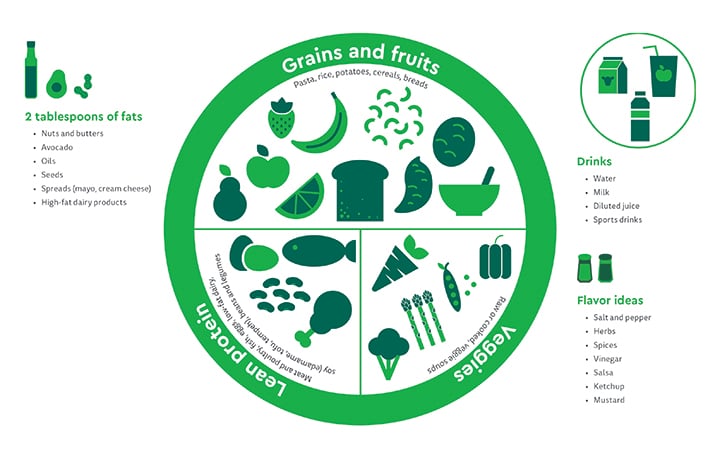- Doctors & Departments
-
Conditions & Advice
- Overview
- Conditions and Symptoms
- Symptom Checker
- Parent Resources
- The Connection Journey
- Calm A Crying Baby
- Sports Articles
- Dosage Tables
- Baby Guide
-
Your Visit
- Overview
- Prepare for Your Visit
- Your Overnight Stay
- Send a Cheer Card
- Family and Patient Resources
- Patient Cost Estimate
- Insurance and Financial Resources
- Online Bill Pay
- Medical Records
- Policies and Procedures
- We Ask Because We Care
Click to find the locations nearest youFind locations by region
See all locations -
Community
- Overview
- Addressing the Youth Mental Health Crisis
- Calendar of Events
- Child Health Advocacy
- Community Health
- Community Partners
- Corporate Relations
- Global Health
- Patient Advocacy
- Patient Stories
- Pediatric Affiliations
- Support Children’s Colorado
- Specialty Outreach Clinics
Your Support Matters
Upcoming Events
Child Life 101
Wednesday, June 12, 2024Join us to learn about the work of a child life specialist, including...
-
Research & Innovation
- Overview
- Pediatric Clinical Trials
- Q: Pediatric Health Advances
- Discoveries and Milestones
- Training and Internships
- Academic Affiliation
- Investigator Resources
- Funding Opportunities
- Center For Innovation
- Support Our Research
- Research Areas

It starts with a Q:
For the latest cutting-edge research, innovative collaborations and remarkable discoveries in child health, read stories from across all our areas of study in Q: Advances and Answers in Pediatric Health.


Why Dancers Need Adequate Nutrition for Whole Body Health
Dance is a demanding activity that uses intermittent bursts of anaerobic energy – an activity that’s short in length with high intensity – to create artistic movements. Compared to traditional team sports, the artistic and athletic nature of dance makes it not only a unique sport, but one that requires proper nutrition. Below, our sports medicine experts highlight the importance of proper nutrition, bone health and hydration for dance athletes to achieve their best health and performance.
Dance nutrition and energy intake
Food serves a dancer’s body as a source of fuel and enjoyment. Eating enough of each food group throughout the day leads to proper energy intake for performance, growth and development.
Dancers often feel pressure to maintain a thin body, and performance anxiety or not wanting to feel full before rehearsals can lead to too little food intake. These factors often cause under-fueling. Research shows that dancers tend to have low energy intake — around 70% to 80% of their expected nutritional needs, which can lead to:
- Lower metabolic rates
- Menstrual dysfunction or amenorrhea
- Lower bone mineral density
- Increased risk of injury
Ensuring athletes are eating enough food and meeting caloric needs improves a dancer’s overall health including metabolism, hormone health including a regular menstrual cycle, gut health, mental health, more efficient muscle recovery, cardiovascular health, endurance and greatly reduces the risk of injury. Although portions may differ based on the dancer’s age and size, most athletes need three meals and two to three snacks daily.
Dancers should have a meal two to four hours before practice and a snack 30 to 60 minutes before their activity. For practices after school, the dancer may have lunch at noon and a snack a half hour before practice. If rehearsal goes from 8 a.m. to 2 p.m. on the weekend, eat breakfast between 6 a.m. and 7 a.m., have two to three snacks during practice and eat lunch right after rehearsal. This type of fueling during rehearsals provides much needed support for dancers to perform their best.
Snack ideas for dancers
- Keep these snacks handy at home or on the road:
- Fruit with cheese
- Yogurt with fruit and granola
- Bagel with cream cheese or peanut butter
- Energy bites (recipe below)
- Granola bar
- Trail mix with nuts and fruit
- A fruit and yogurt smoothie
- Edamame (fresh or dried)
- Hard boiled eggs and crackers
- Cheese and crackers
- Hummus with crackers and veggies
Daily meal and snack examples for dancers
Our experts have provided some meal and snack ideas to help fuel dancers throughout the day.
- Yogurt with fruit, granola and nuts
- Peanut butter and banana toast with a hard-boiled egg
- Oatmeal with cinnamon, pecans, chia seeds and berries
- Cheese and crackers
- Banana with nut butter
- Granola bar
- Deli turkey sandwich with cheese and mayo; snap peas with hummus and chips on the side
- Burrito bowl with chicken or tofu, rice, beans, sliced bell peppers, cheese or guacamole
- Chicken quesadilla with beans and salsa and a side of tortilla chips and guacamole
- Trail mix
- Bagel with cream cheese
- Glass of milk with energy bites (recipe below)
- Spaghetti with meat sauce and a side salad
- Shrimp stir fry with veggies, rice and your favorite stir fry sauce
- Salmon with a baked potato and green beans
- Fruit with whipped cream and dark chocolate
- Crackers with nut butter
- Homemade muffin with butter or nut butter
Moderate activity meal example
Training length and intensity vary from day to day and week to week, as do competition and performance schedules. So, coordinate your meals based on how hard or easy that day may be. Below is an example of a plate for a single meal on a day of moderate training, or one low to moderate intensity practice. You can use this as the baseline from where you adjust for an easier or harder day.

Strenuous activity meal example
As exercise time increases and your dancer grows, their energy and food needs also increase. A hard day includes at least two demanding workouts or a lengthy performance. A plate that incorporates more grains ensures that as rehearsal time becomes longer or more strenuous, athletes have enough fuel. Use a plate like the one below to plan meals for those hard training days.

Nutrition and bone health
Ensuring your child meets their nutrition and energy needs is the first step to strong bones, especially in dancers. If they’re not eating enough or eating foods that are not rich in bone-building ingredients, bone growth slows, and they will have increased risk for low bone mineral density and bone injury. In addition to meeting energy needs, dancers should meet their calcium, vitamin D and iron needs.
|
|
Calcium Needs |
Number of Foods/Day |
High-Calcium Food Choices |
|
4 to 8 years old |
1000mg |
2 to 3 |
1 cup dairy, soy or fortified non-dairy milk, 8oz yogurt, 1 cup fortified orange juice, 1.5oz mozzarella, 3oz sardines, ½ cup firm tofu, 1 cup edamame, 1 cup cooked spinach, 1.5 cups cooked kale or turnip greens |
|
9 to 13 years old |
1300mg |
3 to 4 |
|
|
14 to 18 years old |
1300mg |
3 to 4 |
|
|
19 to 50 years old |
1000mg |
2 to 3 |
Iron is also an essential nutrient for dancers that carries oxygen to the brain and muscles. Although we don’t recommend taking iron supplements unless prescribed by a doctor because it can stay in the body and cause toxicity, incorporating iron rich foods like the ones below can help performance. Consult a sports medicine doctor if you’re concerned about iron or any other deficiency that may require a supplement.
|
|
Female Iron Needs |
Male Iron Needs |
High-Iron Food Choices |
|
4 to 8 years old |
10mg |
10mg |
Fortified breakfast cereals, oysters, white beans, lentils, cooked spinach, firm tofu, dark chocolate, kidney beans, sardines, chickpeas, canned stewed tomatoes, beef, potatoes with skin and cashews |
|
9 to 13 years old |
8mg |
8mg |
|
|
14 to 18 years old |
15mg |
11mg |
|
|
19 to 50 years old |
18mg |
8mg |
Hydration for dancers
In young athletes, fluid makes up 60% to 70% of their entire body weight, and is extremely important for nutrient delivery, waste removal and temperature regulation. Dehydration can not only be dangerous but reducing fluid in the body by only 2% of body weight can negatively impact performance. Dancers know they’re well hydrated when they need to use the bathroom every 2 to 3 hours and have plenty of pale-yellow urine, indicated by shades one, two and three below.

Ingredients:
- 8 oz (1 cup packed) chopped dates
- ½ cup honey or maple syrup
- 1 Tbsp chia seeds
- 1 Tbsp ground flax seeds
- Pinch of salt
- 1 ½ cup old-fashioned oats (dry, not cooked)
- ½ cup walnuts
- ½ cup pepitas
- 1 cup dried apricots
- 1/3 cup dark chocolate chips (optional)
Directions:
- Combine dates, honey or syrup, chia, flax, and salt in a food processor. Pulse until smooth and combined. You should be able to stir the mixture, if it is too thick, add another tablespoon or two of honey or syrup.
- Transfer to a large bowl. Stir in oats, walnuts, pepitas and dried apricots until evenly combined.
- Use a spoon or cookie scoop to shape the mix into a 1-2” balls. Alternately, you can line a small baking pan with parchment paper, press the mix evenly into the pan, refrigerate and cut into bars.
- Store covered in the refrigerator for up to 2 weeks.



 720-777-0123
720-777-0123






